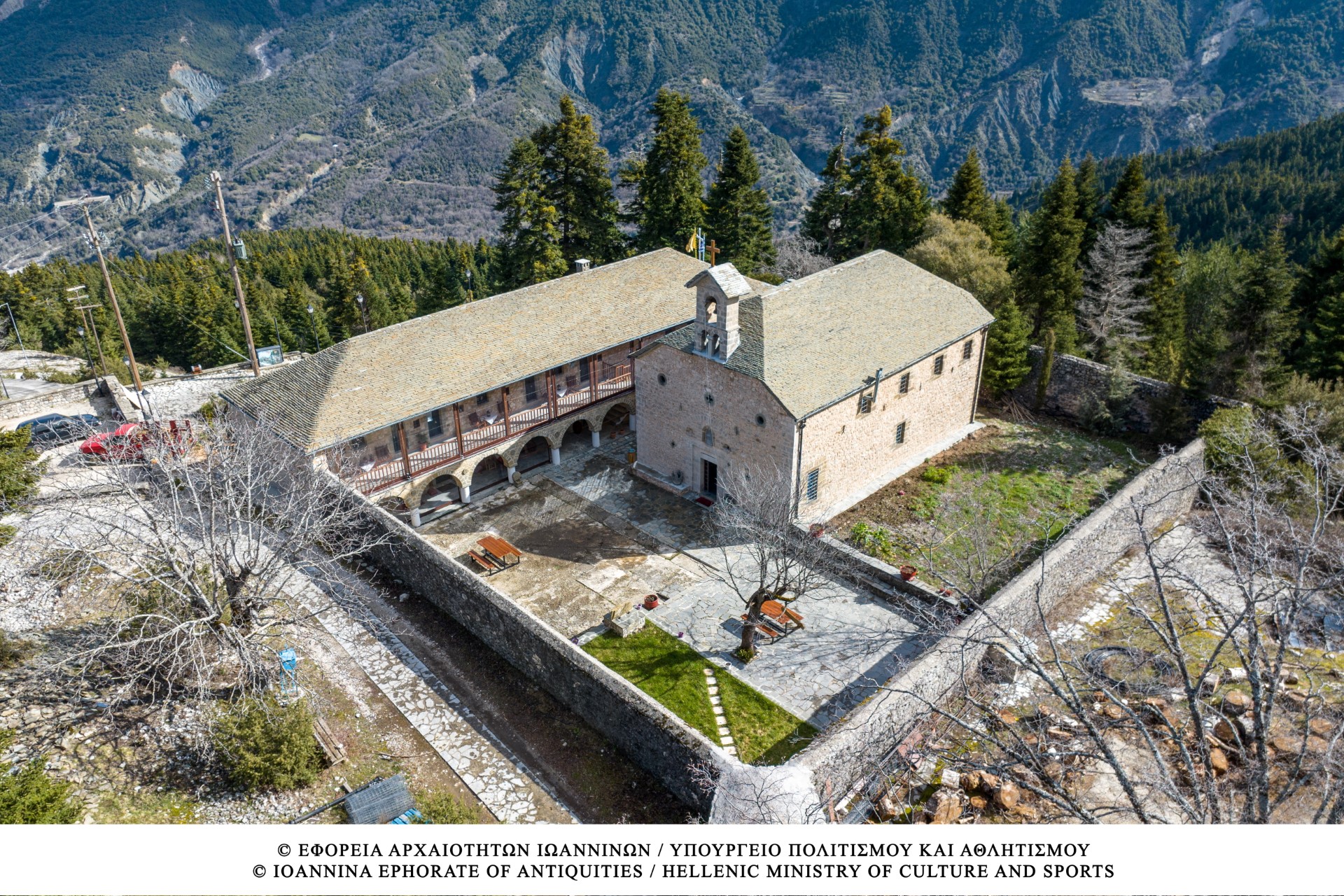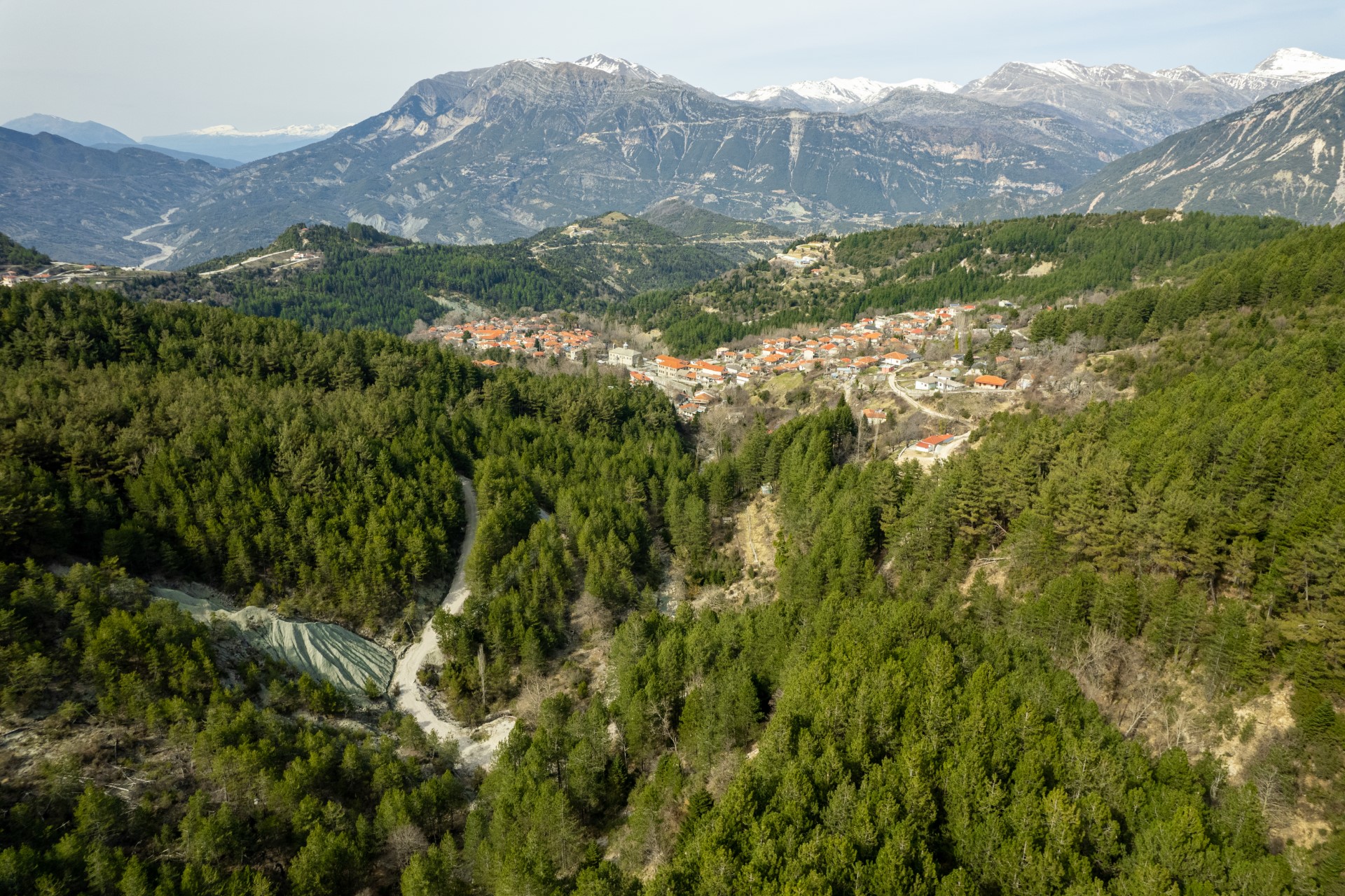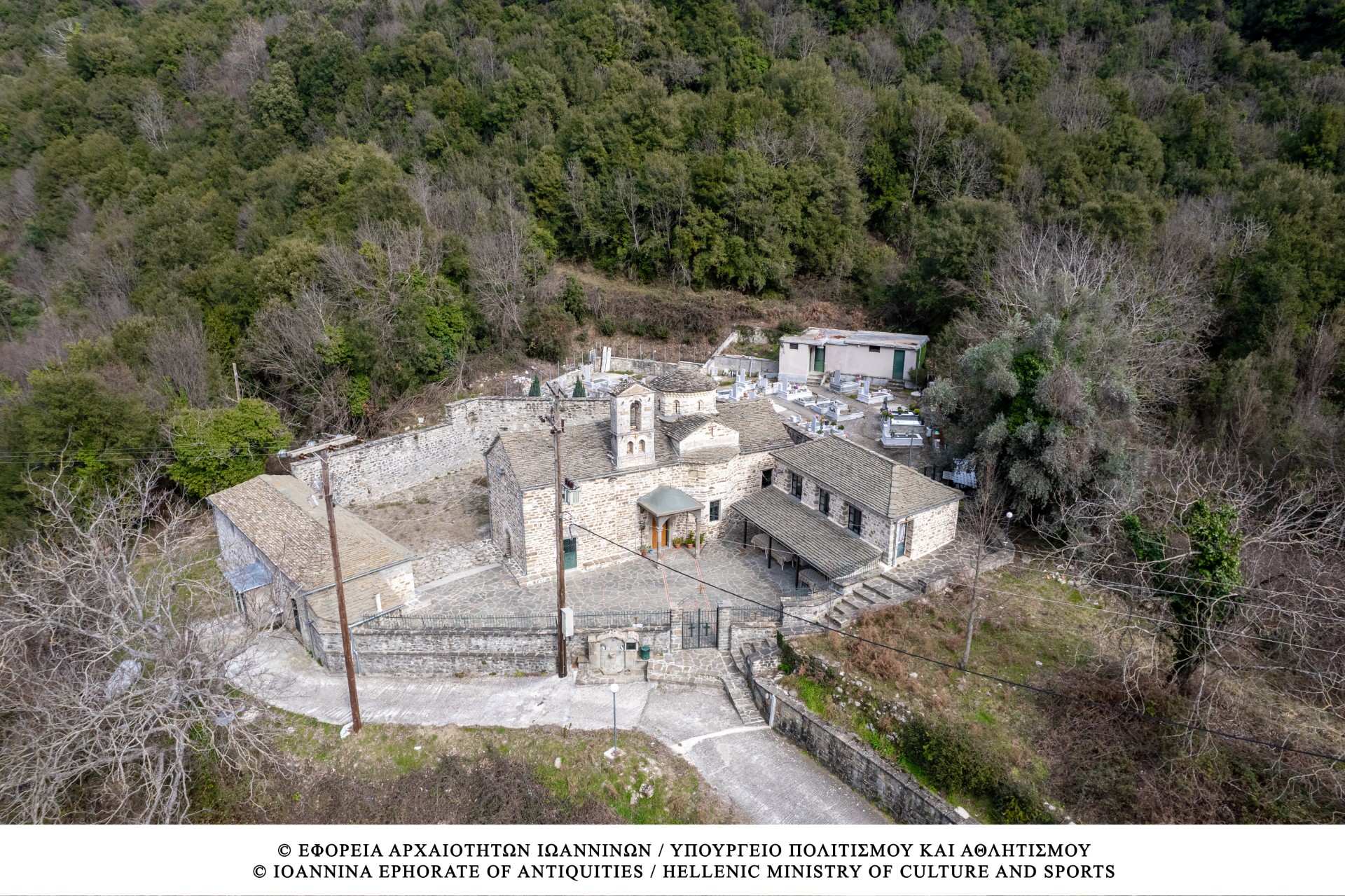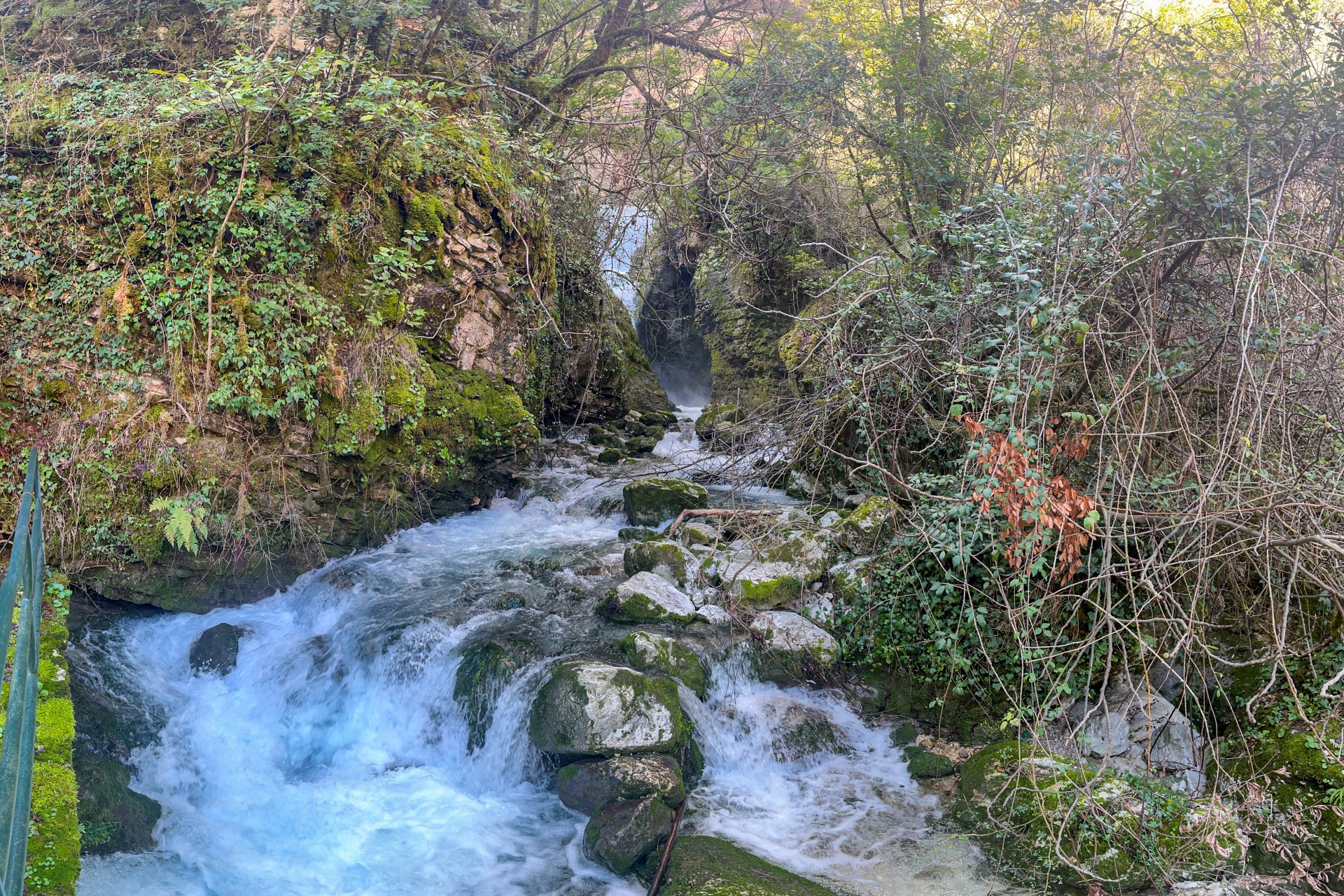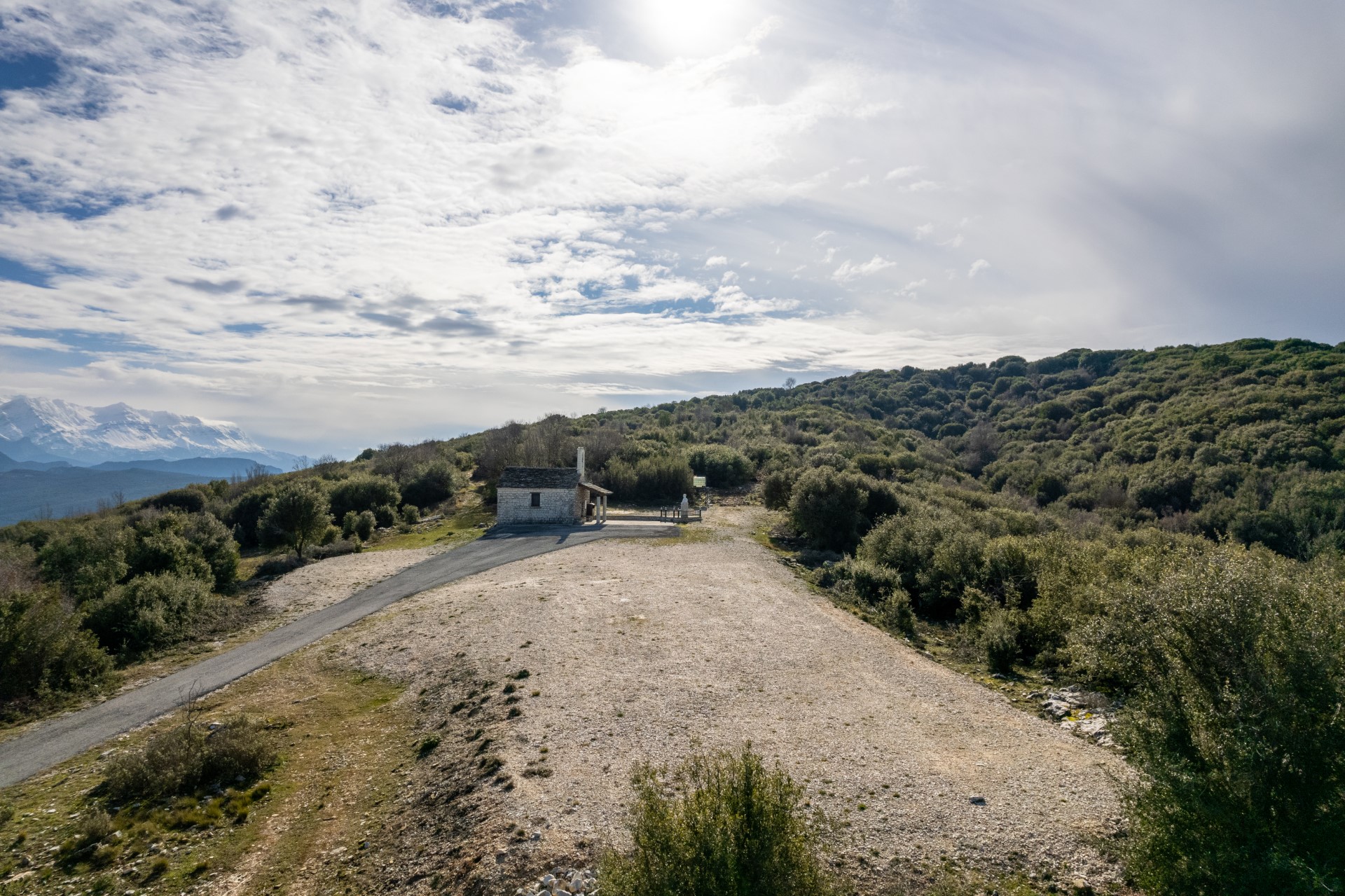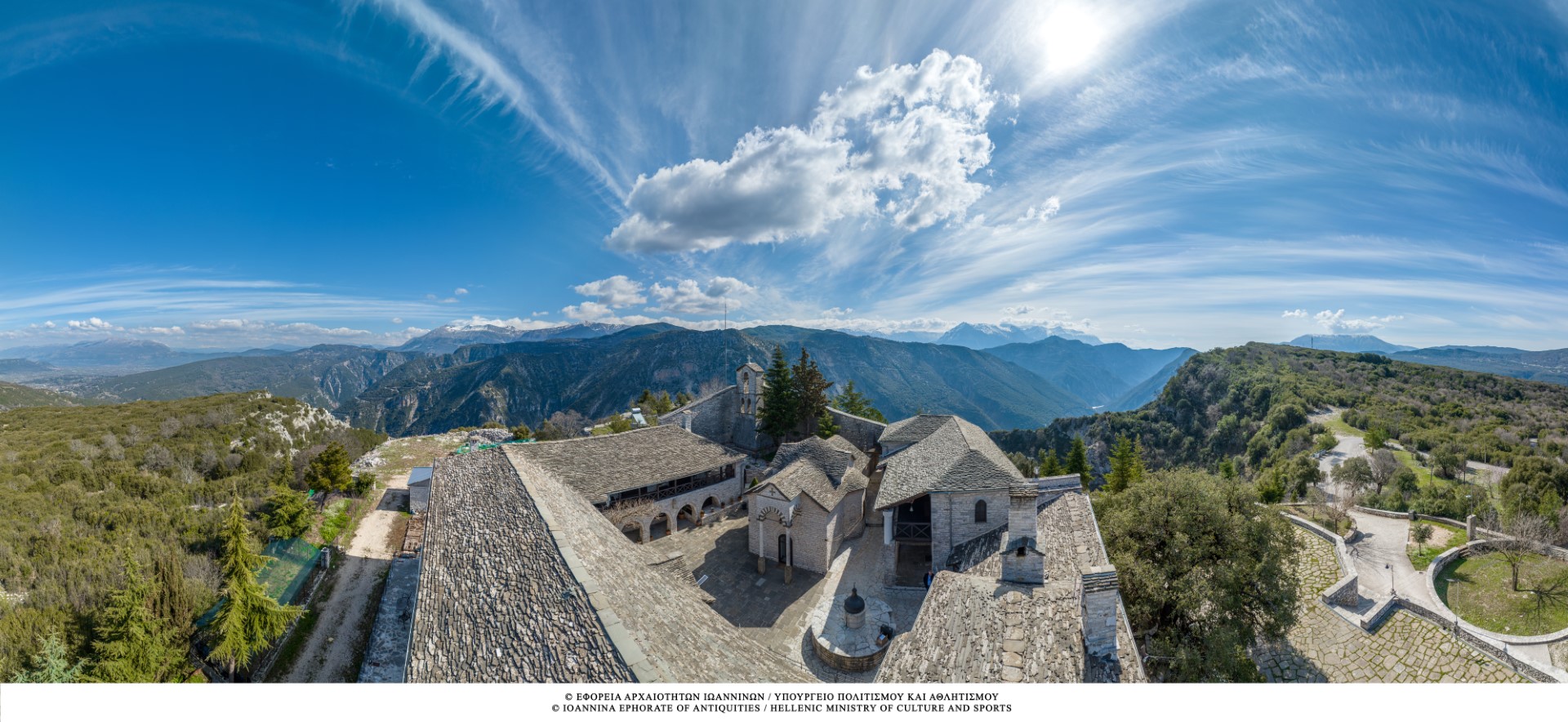The Holy Monastery of Agia Paraskevi, Pramanta is situated just outside the village, on the way to Melissourgoi, on a low hill. It was founded in 1876-1878 by a monk, brother Dionysius, whose secular name was Dimitrios, son of Theodoros, Noutsos or Noutzos, at the site of an older chapel dedicated to Agia Paraskevi. Based at the small chapel, the monk from Pramanta collected money from Greece and abroad and secured the funds to have the quaint monastery built. The monastery with its surrounding area is not only a site of worship, but also a spot for recreation and resting, with its crystal-clear fresh water and excellent climate. The church is a large, three-apse basilica, with four pillars on each row. The iconostasis includes icons painted in 1839 and transferred from the chapel of Agia Paraskevi, the so called ‘Megali Vrysi’ [Big Fountain], which used to stand on a site adjacent to the church. Currently no masses are held at the monastery.
Archives: Destinations
Destination
Local Community and Forest of Pramanta
Pramanta is a mountain village of the Municipality of North Tzoumerka, at an altitude of about 828 metres on the north foothills of Tzoumerka. It is built in an amphitheatric formation at the foot of Stroggoula, the highest peak of the mountain (2,107m). Pramanta is 58km from Ioannina and 66km from Arta. It is a village famous for its master builders where numerous livestock-breeding families reside. The architectural style of its houses is impressive thanks to the century-old expertise of its craftsmen.
The central square is dominated by a century old plane tree. There is also the ‘Arapis’ historic fountain, next to the central church of Agia Paraskevi. At Pramanta visitors can see the watermill complex (fulling mill (mantani), artificial waterfall, grinding mill) that has been characterised as a heritage monument. Another site worth visiting is the threshing floors with their sheds scattered throughout the farming land. Such monuments are encountered in almost all villages of the region. Another sight worth seeing is the Holy Monastery of Agia Paraskevi (1876) at Pramanta. The monastery is outside the village on a low hill, surrounded by a wall like a castle.
Quite a few cultural and religious events are organised at Pramanta and preserve local customs. Locals celebrate the day after Whit Sunday at the Holy Trinity church. After the mass there is a feast with traditional music and a meal served on a communal table. There are also festivals on 17 July at the church of St. Marina and on 26 July at the church of Agia Paraskevi, in the village. The latter is a three- or four-day festive event (if the fourth day is a Saturday or a Sunday) and the traditional celebration starts on 25 July. The feast takes place at the central village square with traditional music and dancing. In the evening of 27 July locals dance the ‘kangelari’, a dance dating back to the 16th century, originally used by Greeks to communicate without raising suspicion among Ottoman authority officials. Finally, on the eve and the feast day of the Assumption, on the 15 August, the traditional Assumption church festival is held at the central village square.
Anemotrypa Pramanta Cave
The Anemotrypa Cave is a unique site in the bowels of the earth. At 60km from Ioannina, three kilometres from Pramanta, west of Stroggoula, at an altitude of 900 meters, visitors encounter this unique cave. It was first discovered in 1960 and so far 270 meters in length are available for visitors.
After the entrance, the corridor leads to the First Chamber, which is 17 meters long and decorated with beautiful curtain-like stalactites reaching all the way to the floor. On the left opens the River Chamber. The stairs lead through the adorned narrow corridor to the Grand Hall, 6 meters high, decorated with candle-like formations, the Waterfall and the Grey Pond. The double staircase after that leads to the White Pond Hall, behind a line of stalagmites. Beyond this point there are 52 meters along the Corridor of Wealth, with the most impressive colourful adornments. The corridor leads to the Red Pond Hall. Terraced stone basins receive the running lake waters. Along with some truly finely textured stalactite ornaments the waters create a unique spectacle. A downhill corridor opens up, divided by a huge stone mass. On its left lies another wonderful pond. On the right the floor is covered by stone formations on which the flows the little water of the Red Pond. This brings us to the last, steeply downhill part of the accessible segment of the cave; in its depths one can hear the rumble of the river water.
The cave is open every day from 10:00 to 16:00. Visits include 20-25 minute guided tours to an underground river within the cave. Visitors to the cave enter and exit through the same point. Admission fee is €3 for adults and €2 for children. The cave comes under the administration of the Utility Company of the Municipality of North Tzoumerka.
In the area surrounding the cave there is a café for tourists to relax and rest.
For further information, please, contact the guides of the Cave on +30-26590-61516 or +30-6958-054.441.
Holy Monastery at Mouchousti, Plaka of Raftanaioi
The Monastery of the Virgin at Mouchousti or Plaka Monastery is located between the Plaka Bridge and the village of Raftanaioi. According to the existing inscription, the monastery was renovated in 1665. The narthex (vestibule) murals were made in 1694 and include scenes of martyrdom, of parables of Jesus, etc. The monastery has a single-apse church with a cruciform roof, a domed basilica with a cupola and circular formations on its long sides. There is also an impressive wood carved, gold-leaf iconostasis adorning the church. The Katholikon (monastery church) has survived almost intact, as well as the main part of the church and part of the courtyard wall. The monastery was operating and active till the beginning of the 20th century. In past times, a wealth of social life events used to be held in its surrounding open-air area.
There used to be a huge livestock market and a festival called ‘mouhousti’. This celebration was held on 8 September, and it used to be called ‘Chtoimero’, i.e., eight-day event. In those days, up to 1912, Plaka, the Bridge and its Monastery, was a central hub for the broader area and this is why the festivities lasted for eight days. Many merchants participated selling copper and bronze items, ‘tsarouchia’ shoes, wool of various qualities, ‘foustanella’ kilts, woollen hats, textiles for making clothes and other wares.
Around the monastery there were numerous fields, from Arta and Kalentzi, on the opposite slope of Xirovouni, as well as the mountain fields of Matsouki. All these areas were used as grazing land for large and smaller animals. The monastery also had numerous olive trees around, a large vineyard and hundreds of beehives to meet the needs of its inhabitants and of the people living around it.
If you find yourself at the Monastery on 8 September, you can dance on the large threshing floor site and hear local visitors telling stories about miracles and traditions. The monastery is not visitable on any other day of the year. Geographically, the monastery belongs to both Ioannina and Arta. Its ecclesiastic district, however, is Arta. For further information and visits to the site, please contact the Holy Metropolis of Arta on +30-26810-27533 or the local priest.
Plaka Bridge
Plaka Bridge, famous for its architecture, is an arched stone bridge spanning the Arachthos river. The bridge connects Tzoumerka with Katsanochoria and, consequently, Ioannina with Arta. This bridge was first built in 1866 and reconstructed in 2019. Its famous architecture means that there is a single arch, with a base span of 40 metres and a peak span of 3.2 metres. The height of the bridge is 21 metres. This is considered the largest single-arch bridge in the Balkan peninsula and the third in size in Europe. It has collapsed three times, in 1860, 1863 and, more recently, in 2015, following heavy rainfalls. After the 2015 collapse, its reconstruction was planned immediately after the event and most of the project was completed on 4 December 2019. The bridge was constructed by the same master builder who built the Bridge in Konitsa and it costed 170,000 Ottoman kuruş, a sum met by Loulis’ sponsorship and contributions of inhabitants of the surrounding communities.
During WW II, the bridge was bombarded by Nazi forces. Despite the bombardment, the bridge only suffered minor damage. Locals repaired it using cement in 1943. Near the bridge, the Plaka-Myrophyllo Agreement was signed by Greek resistance groups on 29 February 1944. There used to be a niche at the bridge where craftsmen had painted its patron saint. In recent years the bridge has become a tourist sight attraction for the area.
In 2007 the bridge suffered serious damage during the heavy rainfalls and there were plans for its repair project, which were not realised, which aroused protests. The arch had collapsed on 1 February 2015, when the rainfall led to river flooding. The study was undertaken by the National Metsovion Technical University of Athens and an inter-disciplinary team was responsible for restoring the bridge by autumn 2019. Finally, the arch keystone was put in place to lock the arch on 4 December 2019 and the basic construction was completed. The bridge restoration was awarded the Europa Nostra prize in 2021.
The bridge is visitable and one of the most photographed sites of the region.
Klifki Watermill & Waterfalls
Leaving behind Kalentzi Citadel the route takes us to Klifki Watermill, accessed through a dirt road. The crystal-clear water comes up from the earth, through the rocks, in the valley of the Arachthos river at the Klifki springs. There are two caves on the site. The water springs within one of them and the second one is home to wild pigeons, swifts, and bats.
The springs are located relatively high in relation to the river, about 100m above it, and the flow is strong, about one cubic meter per minute. This rushing water flow adds a special kind of dynamism to the site. Visitors can also enjoy the rainbow created because of the falling water drops. Water, nature, the vitalising atmosphere, the sounds of the region create a unique experience one can only enjoy in this part of the world.
The spring water was used to run a fulling mill (mantani), an artificial waterfall and a grounding mill. The fulling mill was specifically made with wooden arms so that the new flocati rugs could be soaked before they were beaten clean along with other cloth items. The water mill is an authentic traditional wooden mill with grinding stones. The lower stone is stable and the top one can be turned to grind cereal grain produced in the surrounding area.
The mill is not in operation anymore, but it is truly impressive and revives images from a past era.
Kalentzi Citadel
‘Kastri’, i.e., citadel, is the hill to the east of Kalentzi mountain settlement, a site with ruins of a square tower dating to the Hellenistic times.
The citadel is related to the name of the village. There are three versions of the story about how the village was named. The first version maintains that the village is named after the citadel. A small castle is called Kale ışık and as years went by it was hellenised to Kalentzi. The second version supports that the name originates from a family surname.
The view from the Arachthos river ravine is impressive and one can marvel at the magnificence of the Tzoumerka range. The site provides a kiosk and a parking area for visitors who want to enjoy the surroundings. The location is wonderful for photographing the wild flora of the Pindos range and is very close to the Citadel kiosk. Visitors must be careful when approaching the site because there is no footpath as yet. On the way to the Citadel visitors can see various plant species of the Pindos range.
Aetorrachi Battle monument
The Aetorrachi Battle monument is near the village, on an accessible hill. Every year, on 1 December, or the last Sunday of November, residents and authorities pay tribute to those killed in the battle. This battle given was most significant in the effort to liberate Ioannina. During the 1st Balkan War, the Ottoman forces had established an advanced defence line, which was part of the fortifications of Ioannina. On 29 November 1912, two Evzonoi battalions and a battery fought for 30 hours and forced the enemy to retreat so that the Greek troops could advance towards Bizani.
The battle of Aetorrachi lasted about 9 days, from the 1st to the 9th of December 1912 and the victory of the Greek army was decisive for the Bizani battle that ensued. The National History Museum in Athens exhibits a chromolithograph, a tableau representing the scale of the battle, titled “The Great Battle of Aetorrachi, in Epirus and the bravery of the Evzonoi of the 7th and 10th Battalion on 1 December 1912”.
Officer Skarlatos monument (Profitis Ilias, Elliniko)
The monument in honour of Officer Skarlatos Rosetis, who was killed when heroically fighting during the 1st Balkan War, stands at the site of Prophet Elias’ Church, in the vicinity of Elliniko, a village in the Municipality of North Tzoumerka of the Prefecture of Ioannina. It is encountered when arriving from Ioannina, before reaching the village. Scarlatos Rosetis was born in Athens in 1892 and attended the Hellenic Army Academy. His father, Sotirios Rosetis was a Major of the Greek Army.
During the 1st Balkan War, Sergeant Scarlatos Rosetis was sent to the battlefields of Bizani serving as adjutant το Captain Stavros Rigas. In December, the Ottoman forces were pushed back beyond the external perimeter of Bizani fortifications and the battle at Bizani went on the following day, with the Greeks approaching the retrenchment at a distance of 500 metres. On 5 December 1912 there was a Turkish attack against the Greek Evzonoi forces. According to Captain Stavros Rigas, Skarlatos Rosetis was seen fighting Ottoman soldiers with his bayonet; as the enemy retreated, the young officer continued to fight bravely and found himself in the front line. Rosetis boldly protected a Greek guard from a gigantic opponent; men of the Ottoman army noticed what was happening and rushed to the scene killing both Greeks. Rosetis was the first Military Academy graduate to die fighting like a hero to liberate Ioannina; this is why an annual commemorative event is held on 5 December to pay tribute to him.
Today, at the peak of Aetorrachi, at the location of Profitis Ilias, facing Elliniko, Ioannina, stands his bust exactly where the young officer died and was buried, near the small chapel that was rebuilt in his honour.
Holy Monastery of Tsouka, Elliniko
The Holy Monastery of Tsouka, Elliniko stands on the hill of the same name at an altitude of 760 metres, in the vicinity of Elliniko, Municipal Unit of Katsanochoria. The Monastery is dedicated to the Nativity of Virgin Mary and was probably built in 1190 by Byzantine emperor Isaac II Angelos. It was destroyed in 1736 and renovated in 1779. The Holy Monastery is named after the hill peak and was called Tsuka Analta, which means ‘high peak’ in ‘Vlachika’, the Aromanian language.
The monastery was surrounded by a fortress to be protected against thieves. The entrance through the high wall is decorated with stone reliefs; the cells are situated along the southwest and northern sides. An impressive inscription on the stone bell tower informs that it was built in 1866. The Katholikon, i.e., the monastery church, was built at the end of the 17th century in the Athonite style. Inside there is an inscription indicating that the church iconography was sponsored by the founder (ktitor) Alexios Papaioannou and ‘gilded’ in 1779 by Ath. Ioannou, a priest from Kapesovo. The only visible feature of the murals is the haloes above the figures. The wooden iconostasis of the church (18th century) is wonderful with an exceptional plant-motif decoration and dates to the 18th century. Behind the monastery, visitors and pilgrims can enjoy the view of the Arachthos river valley, a location of exceptional natural beauty.
The festival of the Holy Monastery of Tsouka, the major pilgrimage destination in Ioannina prefecture, is held on 8 September. Important dates to attend church mass are all Virgin Mary’s feast days.
Visitors are admitted to the Holy Monastery of Tsouka from 8 in the morning till sunset. The contact number for information about masses held at the Monastery is +30-26510-89223.

